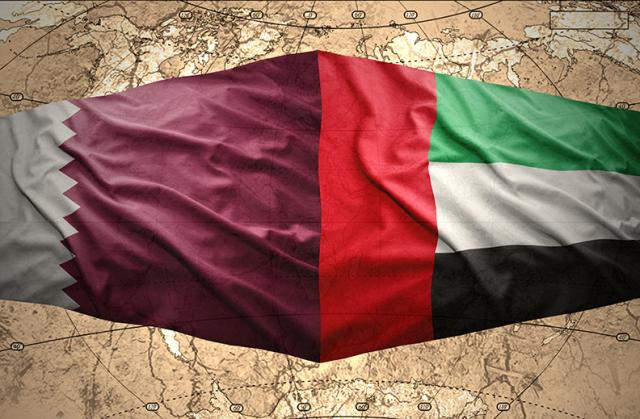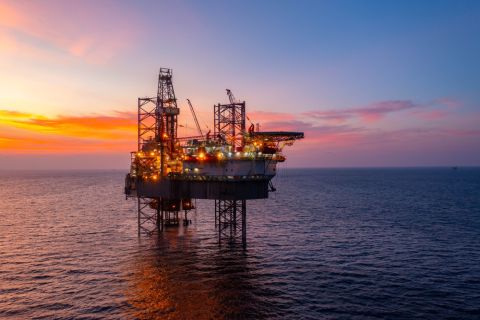
Despite the political tension between the UAE and Qatar, the two Arabian Gulf states signed an agreement to renew the concession for the continued development and operation of El-Bunduq offshore oil field.
El-Bunduq field is located about 200 km northwest from Abu Dhabi, UAE, and about 100 km east from Doha, the capital of Qatar, and straddles the offshore boundary between the two states. The field is unique in that it is jointly owned by the UAE and Qatar, with United Petroleum Development Company (UPD) serving as intermediary. The partnership between the countries has been used as an example of cooperative diplomacy for more than 40 years.
Following promising achievements in 2015, Qatar Petroleum and the Abu Dhabi Supreme Petroleum Council (on behalf of the Government of Abu Dhabi) agreed to transfer the full management responsibilities to UPD, which has acquired the BP 3% share in El-Bunduq field and become the owner of the total 100% shares of El-Bunduq Company.
Shareholders of UPD include Japan’s JX Nippon Oil and Gas Exploration Corporation (45%), Cosmo Oil Company (45%), and Mitsui Oil Exploration Company (10%).
El-Bunduq Field was discovered in 1965 by Abu Dhabi Marine Authority (ADMA). In March 1969, the State of Qatar and the Emirate of Abu Dhabi signed an agreement stipulating that El-Bunduq field is equally owned by both sides. Al Bunduq production began in 1975. The original concession expired on March 8.
The field produces oil and gas from 28 wells at a complex of platforms tied to Abu Dhabi’s Das Island by a 27-km pipeline. The companies don’t report flow rates. Current crude production stands at around 13,000 bbl/d recovered from 28 production wells, which is transported through a 27km pipeline to the DasIsland terminal from the Central Platform installed in the center of the field. El-Bunduq’s crude bears a close resemblance to crude from the Zakum field in characteristics. Hence, the two are blended and stored together in crude tanks on Das Island and then called “Lower Zakum Crude”, which is then shipped to various oil refineries in Japan.
However, after more than 43 years of production, oilfield produces far more water than hydrocarbons, but its Japanese operator hopes to keep it pumping for another decade with a costly makeover.
The field serves as a place for engineers to test the advanced techniques that will one day be needed at larger fields in Qatar and Abu Dhabi. Efforts to counter the natural decline of this small offshore reservoir are a dress rehearsal for the larger task.
Water injection in the field commenced in January 1984. A second phase of enhanced oil recovery began in 2005, when the company started injecting natural gas into its wells to boost flagging reservoir pressure. while gas injection platform was introduced in the offshore complex in 2005, and aimed to minimize gas flaring at the field while enhancing oil recovery. There is 40 mcf of associated gas are re-injected daily in the Arab reservoirs through two wells, EB-48 and EB-14A.
The company also said that it was planning to drill a deep exploration well at the field, designed to evaluate the Khuff and pre-Khuff hydrocarbon potential in the field by mid-2015, but it was delayed. The company said that the well was scheduled to be spudded in May 2015. The well was initially planned to be drilled in early 2013 but was delayed several times for unknown reasons. “Preparation work is ongoing to drill the E-1 well, which is designed to test the Khuff and pre-Khuff potential of the Bunduq Field structure. The well is to be spudded in April 2018,” Qatar Petroleum said in its annual report.
In addition, various studies continue to evaluate the remaining hydrocarbon potential of Mesozoic Blocks 1, 2, 3, 7, 8, 10, 11, 13, 14, and pre-Khuff Block-E, according to Qatar Petroleum’s annual report.
Recommended Reading
APA Corp., TotalEnergies Announce $10.5B FID on ‘Goliath’ Sized Deal Offshore Suriname
2024-10-01 - APA and TotalEnergies’ offshore Suriname GranMorgu development is estimated to hold recoverable reserves of more than 750 million barrels.
APA, TotalEnergies Aim for 'New Dawn' in Suriname with Massive GranMorgu Project
2024-10-01 - APA Corp. and TotalEnergies announced a $10.5 billion final investment decision for the GranMorgu project located offshore Suriname in Block 58. First production to come from a 220,000 bbl/d FPSO is slated to flow in 2028.
E&P Highlights: Oct. 28, 2024
2024-10-28 - Here’s a roundup of the latest E&P headlines, including a new field coming onstream and an oilfield service provider unveiling new technology.
Suriname's Staatsolie Says Exxon has Withdrawn from Offshore Block
2024-11-20 - Suriname's state-run oil company Staatsolie said on Nov. 20 that U.S. oil giant Exxon Mobil has withdrawn from its offshore block 52, and block operator Petronas Suriname E&P will take over its 50% stake.
GeoPark Announces Production Start at Argentina’s Confluencia Norte
2024-11-12 - GeoPark expects production at the Confluencia Norte Block in Rio Negro, Argentina to reach its peak within 90 days of startup.
Comments
Add new comment
This conversation is moderated according to Hart Energy community rules. Please read the rules before joining the discussion. If you’re experiencing any technical problems, please contact our customer care team.





